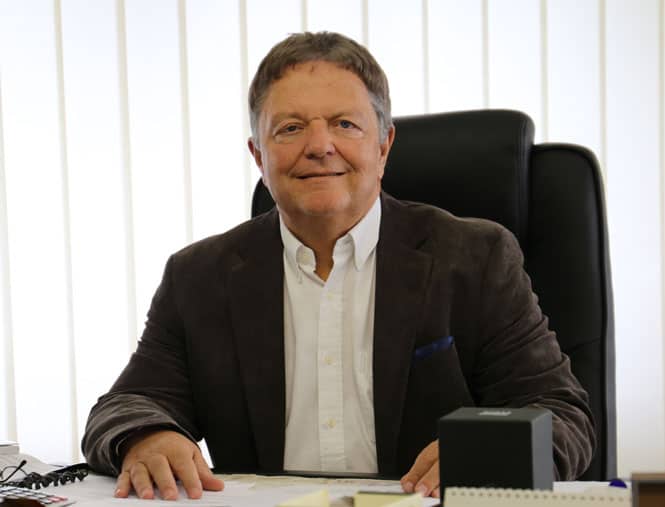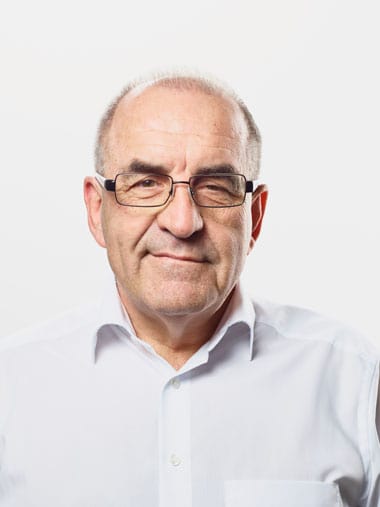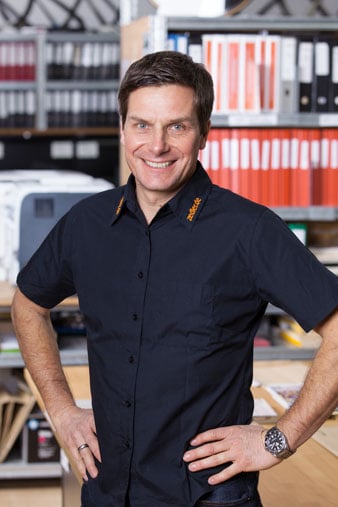Most bicycle brands like to brag about how innovative they are; it’s an important part of their marketing messages. But too much innovation can be dangerous when it comes to consumer safety.
While innovation is healthy, a constant push to invent new products and new categories can cause problems, as products go beyond the bounds of established technical standards that are supposed to ensure that consumer products are safe when used as intended.
Among bicycle safety experts, there is broad agreement that many of the safety standards for bicycles and components are no longer relevant.
We talked to several of these experts about these outdated standards, and how the bicycle industry should address them going forward.
Left behind
“The dynamics of the market have left the regulations behind in many ways, and throughout the history of bicycle safety standards, there are many examples of how obsolete such technical rules can become in a short time,” said Marcus Schröeder, managing director of EFBE, a German testing lab and safety institute for bicycles.
From mountain bikes to road and cargo bikes, a multitude of niches and subcategories have popped up in recent years.
While each niche poses different issues — suspension travel for mountain bikes, tire width for road bikes, and maximum allowed load capacity for cargo bikes, as examples — these issues all arise from the same underlying problem: The basic norms and regulations that govern safety considerations, such as ISO 4210, have become outdated. The pace of technical evolution has simply left many of these standards behind.
Yet there is a strong argument for ensuring that manufacturers find agreement on new norms for these products, especially in an industry as globalized as the bike industry.

“Standards have been defined and implemented to make sure that commercially available bicycles and components are as safe as possible,” said Erhard Büchel, president of the World Bicycle Industry Association, which represents the global bicycle, e-bike and bicycle parts and accessories industry. “At CONEBI and WBIA, we have noticed a stream of innovations throughout all segments of the industry – conventional bicycles, pedelecs, parts and accessories.”
Büchel said CONEBI, which represents European bicycle manufacturers, and the WBIA are working to set new standards.
“Both on a European and an international level, new norms and regulations are being developed and old norms are being examined on a regular basis in order to keep up with the latest technical developments,” he said.
All Eyes on Germany
Many of these new regulations will come from Europe — and, particularly, from Germany, which is the biggest single market in Europe. Regulations set by the European Union and by German authorities often end up providing the template for new global rules.
The European Union has recently updated its pedelec and e-bike regulations. Regulation 168/2013 and EN 15194:2017 are the new norms for all pedelecs that adhere to the 250W motor limit and 25 kph speed limit.
The exceptions are e-mountain bikes, and throttle-equipped e-bikes where riders can get electric support from the drive without pedaling.
“The European Machinery Directive forces the manufacturers to maintain stringent documentation and procedures — none of which would raise an eyebrow in other industries, to be honest. Frankly, the whole industry has benefitted from this,” Schröder said.
A heavy lift
Cargo bikes are a striking example of a category that evolved more rapidly than most could have anticipated.
From being a car alternative for families, cargo bikes are now a serious option for commercial logistics companies, as a walk through the cargo bike area in Hall A1 demonstrates.
Some of these commercial cargo bikes are big, brawny workhorses that have little in common with family-friendly bikes.

“Apart from e-scooters, this is the area where we have seen the situation develop most dynamically in recent years,” said Ernst Brust, the founder of Velotech, another established testing lab for bikes. Brust has since turned the company over to his son and now works for the German pedelec brand Fischer.
He has been involved from the start with an industry working group that is developing the new DIN 79010 standard for e-cargo bikes.
DIN 79010 is a good example of how standards can lag behind the market; the group started the process more than four years ago, and is still working to resolve some 300 objections that have been raised by various stakeholders.
The standards-setting process in most industries, like the one now ongoing for DIN 79010, typically requires broad consensus from all stakeholders before they can go into effect.
One of the challenges is creating a test that can apply to two-, three-, and even four-wheeled e-cargo bikes. Another challenge comes from logistics companies, who want to push the maximum allowed weight for commercial e-cargo bikes far beyond the limits that have traditionally defined bicycle parts.
We are, after all, still talking about bicycles that should be easy to operate.
Safety First
To reflect the complexity of loads as they occur on a cargo bike, the Zedler Institute, a German bicycle testing and certification lab, is developing a dynamic test bay that can handle two- and three-wheeled cargo bikes.

“Norms and regulations can give manufacturers some certainty and guidelines throughout their innovation process, but they can also become a problem,” founder Dirk Zedler said.
He added, “Too many norms and regulations can kill off the innovative drive within the industry, and that would be a real pity. After all, the bicycle industry has come a long way and has evolved the simple bicycle into a multitude of sophisticated types mainly based on passion and commitment.”
As an expert in product testing and safety — and in investigating bike accidents that result from product failures — Zedler has helped several companies limit damages caused by faulty products through recalls.
He says companies shouldn’t rely on existing norms and regulations that haven’t kept up with new product categories.
Instead, he believes bikemakers should take responsibility for ensuring that their products can stand up to real-world use, even if it costs them more time and expense than merely meeting the standard. They should insist their suppliers do the same.
“From my point of view, rules and regulations are less important than a safety-conscious mindset on behalf of the manufacturers and their suppliers,” Zedler said. “Serious and independent testing on a regular basis may cost some money, but it also saves a lot of costs for companies, as a recall costs much more and also can do damage to a company’s reputation.”
He added, “My message is to better be safe than sorry: Now that the bicycle has grown up, it is time to step up the game for the industry. Get out of the garage workshops and professionalize your business.”

EFBE’s Schröder strikes a similar tone. He believes gravity-oriented mountain bikes are as much of a problem as pedelcs and cargo bikes.
“So far, the default procedure within the bicycle industry has been trust rather than control — but that is a sure way to get into trouble,” Schröder said. “At EFBE, we strongly advise manufacturers of entire bicycles and components to invest in meaningful independent testing that exceeds existing ISO and CE norms wherever necessary, taking into account the mode of use and the overall system weight.”
Schröder said some brands have done pioneering work on e-enduro bikes, and a handful of component managers test their parts to “way more stringent demands” than called for in the relevant standards.
For those who complain about the expense, Schröder offers a simple solution: “If one company cannot afford to pay for tests like that and invest in safety, team up with others and share the costs!”
How Humpert Does It
With its Ergotec brand, Humpert [A6-100] has shown how a responsible bikemaker has gone beyond the standards and established its own system of Safety Levels for handlebars, stems and seatposts.
“Humpert has a century worth of experience in building these kinds of parts. Apart from the usual load cycle tests we also do breaking tests to see where the weakest spot of the respective construction is. Naturally we also keep close track of any broken parts in the field, trying to reconstruct how they were used and why they failed,” said Rolf Häcker, head of product development for Humpert.
Humpert relied on studies by the Technical University of Hamburg-Harburg, and by Velotech, to help develop its Safety Levels system.
“Most recently field tests with strain gauges have shown that the DIN-plus norm for an overall system weight of 140 kilograms is not sufficient anymore, so we have decided to make our own in-house tests even stricter,” Häcker said.
Experts wanted
As Germany’s elder statesman for bicycle safety and testing, Brust offered some closing thoughts on the matter.
“Naturally, innovations do slow down this process of setting new standards, but on the other hand new norms need to reflect current developments on the market in order to be relevant,” said Brust, who has been involved in establishing many bicycle standards over the years.
“With heavy pedelecs and large cargo bikes, tire manufacturers need to step up their game and define maximum weights for different tire models,” he added.
In general, Brust said, the industry can take several steps right now to improve its safety record. “First of all, do not touch any goods without a CE marking,” he said. “Second, make sure to use quality hardware and a torque wrench as a standard procedure.”
Brust concluded, “Third, closely observe the market to get precious feedback. And last but not least, education and expertise are investments for the future. The bicycle industry needs more experts.”


